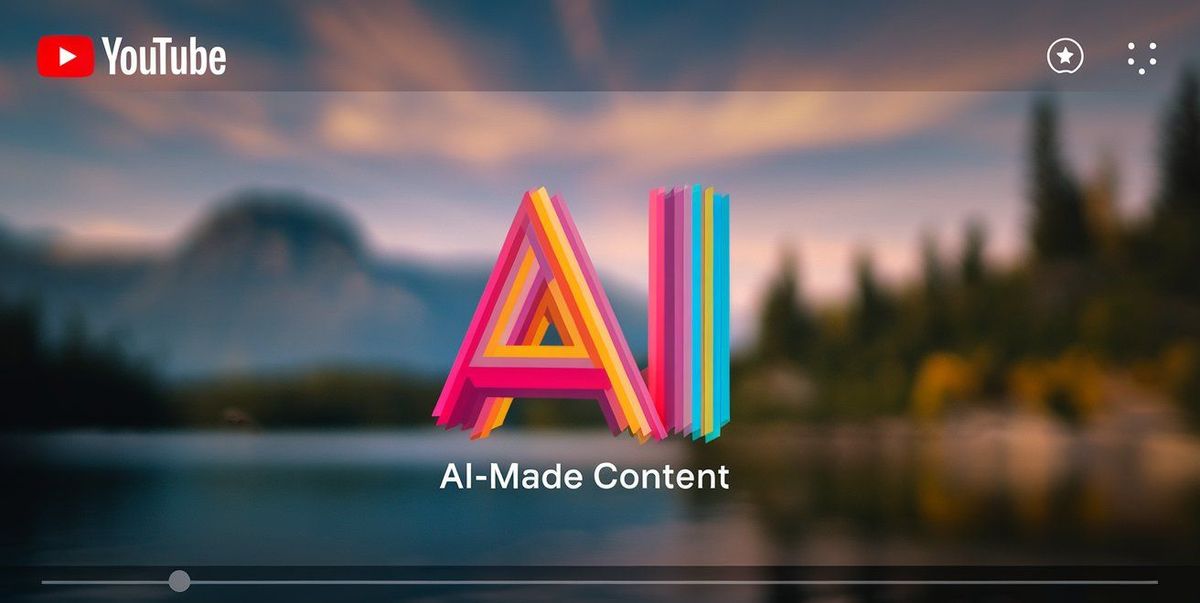Watermarks might not save it Google, is GenAI on YouTube a good idea?

Google is changing the game for video creation by bringing advanced AI models, Veo and Imagen 3, to YouTube Shorts. Over the next few months, creators will get access to Dream Screen, a tool that lets you generate AI-powered backgrounds and short video clips. While AI tech is already out there, this move makes it way easier for millions of creators and billions of users to use. It’s all about giving people more creative power without needing a whole production crew.
Dynamic backgrounds with Dream ScreenDream Screen works by starting with a simple text prompt. Imagen 3, Google’s AI model, generates four image options based on that prompt. Users can choose the image that best suits their needs, and Veo, another AI model, transforms it into a high-quality six-second background video. By 2025, this tool will also allow users to create six-second standalone video clips, offering more flexibility for content creators on YouTube Shorts.
This feature aims to make video creation more accessible. It gives creators the ability to generate professional-looking content without needing advanced tools or a large budget. Dream Screen is intended to help both experienced creators and those new to the platform.
To keep things clear, Google’s adding watermarks to AI-generated content using SynthID.
So, viewers will know when something’s been made with AI.
 Watermarks might not save it Google, is GenAI on YouTube a good idea (Image credit)
Watermarks did not convince us
Watermarks might not save it Google, is GenAI on YouTube a good idea (Image credit)
Watermarks did not convince us
As cool as it sounds, there’s something worth thinking about when we talk about integrating AI into every corner of content creation. Sure, AI is this shiny new toy, but is it really wise to lean on it for everything? You’ve heard the saying, “Too much of a good thing can be bad,” right?
Well, that might be the case here.
On one hand, AI makes life a lot easier. It speeds things up, fills in gaps, and opens up creative doors we never even knew existed. But on the flip side, where’s the line between helpful and over-reliant? If creators get used to letting AI do all the heavy lifting—like generating videos, writing scripts, or even composing music—are we losing some of that human touch?
For non tech-savvy: Generative AI, in its essence, is like a digital alchemist. It doesn’t just understand information; it transforms it, generating something new out of the old. Imagine feeding a machine a banquet of novels, paintings, music – the collective works of humanity’s creativity. What comes out isn’t just a regurgitation of what it’s been fed. No, it’s something original, something unique – or at least, that’s the goal.
At its heart, generative AI operates on a principle of learning and generating, not creating. It’s like teaching a child to draw. First, you show them pictures, explain the concepts of lines, shapes, and colors. Over time, with enough examples, the child begins to draw their own pictures, not copies of what they’ve seen, but their interpretations, their visions. Generative AI works similarly, using vast datasets instead of crayons and paper.
But here’s where the eyebrows furrow in skepticism. How does a machine, a tangle of wires and code, decide what to create? The answer lies in the patterns. Generative AI is a pattern seeker; it learns from the data it’s given, identifying trends, styles, and structures. Then, it uses this understanding to generate new creations, whether it be text, images, music, or even code.
Yet, as we stand in the gallery of generative AI’s creations, we must ask ourselves: are we looking at genuine creativity, or are we merely being shown a mirror of our own thoughts, repackaged and stylized by algorithms? The line between creation and imitation is a fine one, and generative AI dances on it with the grace of a tightrope walker.
Is AI creative: Answering the unanswerable
Creativity has always been about the spark, the struggle, the ah-ha! moments. If we hand those moments over to machines, do we risk flattening out the very thing that makes art special?
And what about authenticity? If everything starts looking AI-polished, it could all blur together. You know how sometimes you see those perfectly airbrushed photos, and they just don’t feel real anymore? That’s kind of the vibe we might be heading toward. AI can churn out beautiful, flawless content, but does that make it better? Or does it just mean we’re all going to be swimming in a sea of polished, but soulless, creations? It’s like having a box of chocolates where every piece tastes exactly the same—where’s the fun in that?
Plus, let’s talk about originality.
AI works by learning from the stuff that’s already out there, right? So, while it’s great at remixing and mashing up ideas, it’s not exactly bringing something completely new to the table. If we keep feeding the machine, won’t we eventually just get… well, more of the same? There’s a risk of innovation grinding to a halt because everything starts pulling from the same AI-generated pool. As the saying goes, “If you want something done right, do it yourself.”
Maybe that’s something creators need to remember.
Featured image credit: Kerem Gülen/Ideogram
